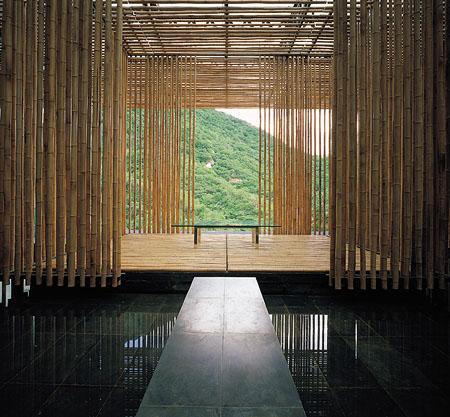
Beijing, China
One out of a hundred, this serene space explores the metaphorical qualities of bamboo
In this project, ten Asian architects were commissioned to design ten villas each, creating a commune of one hundred dwellings in a forest adjacent to the Great Wall of China, an environmentally sensitive boutique hotel. For Kengo Kuma's contribution, he chose to leave the original geographical features intact and use locally produced materials as much as possible. In this way, the project reinforces the planning ideology of the Great Wall, but not its political purpose.
Departing from the 20th century suburban practice of building on flattened land and instead celebrating the site's "intricate undulation," the architect decided to build a different kind of wall. This main feature, made of bamboo, serves as a filter for the surroundings. In sharp contrast to the Great Wall's brick and stone, a material manifestation of severing ties with outside civilizations, bamboo's charm lies in its weakness. Exploiting this aspect, the wall allows light and wind to pass through. Historically imported to Japan from China, bamboo is also a symbol of cultural exchange, and perfectly suits the work of a Japanese architect in China.
Indoors, the material encloses the stairwell and living spaces to great effect. Positioned side by side at varying intervals, bamboo shoots seem to hover above the floor, creating breezy, floating partitions. The Eastern simplicity of the d cor creates an ethereal, meditative atmosphere informed by subtle changes in the weather and landscape.
Formal name of Project:
Great (Bamboo) Wall
Location:
Beijing, China
Gross square footage:
5,686 sq. ft.
Owner:
SOHO China





